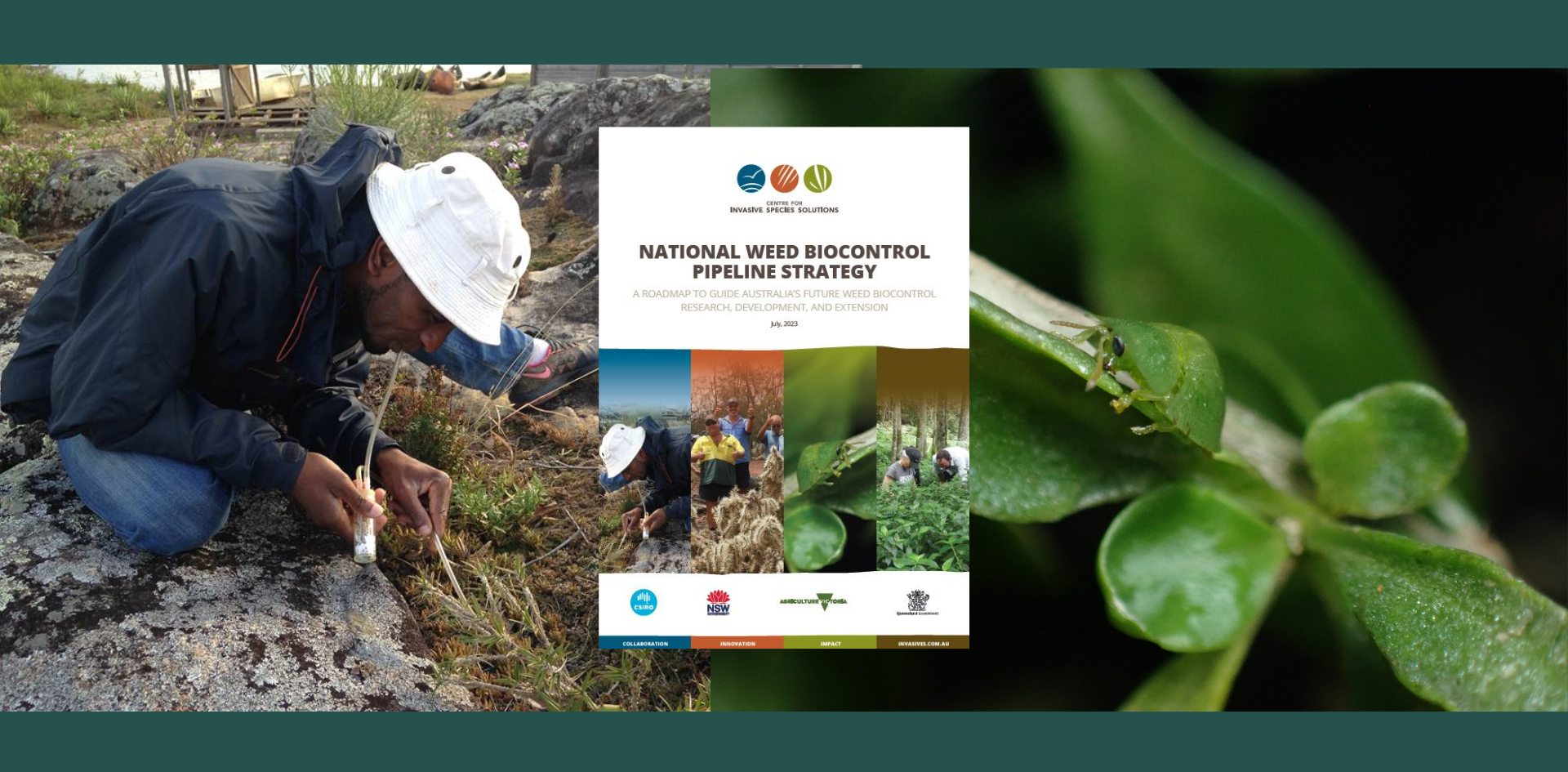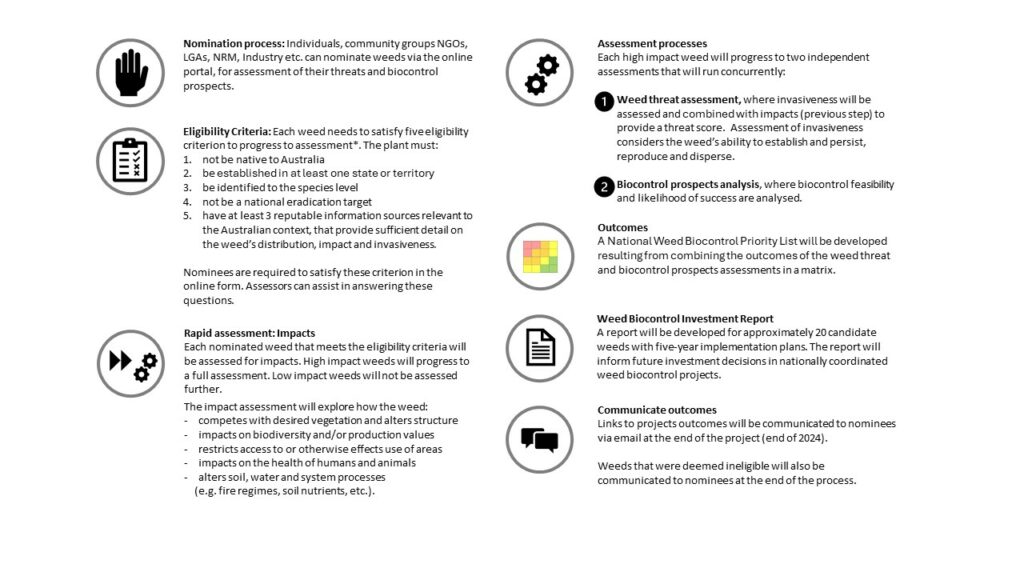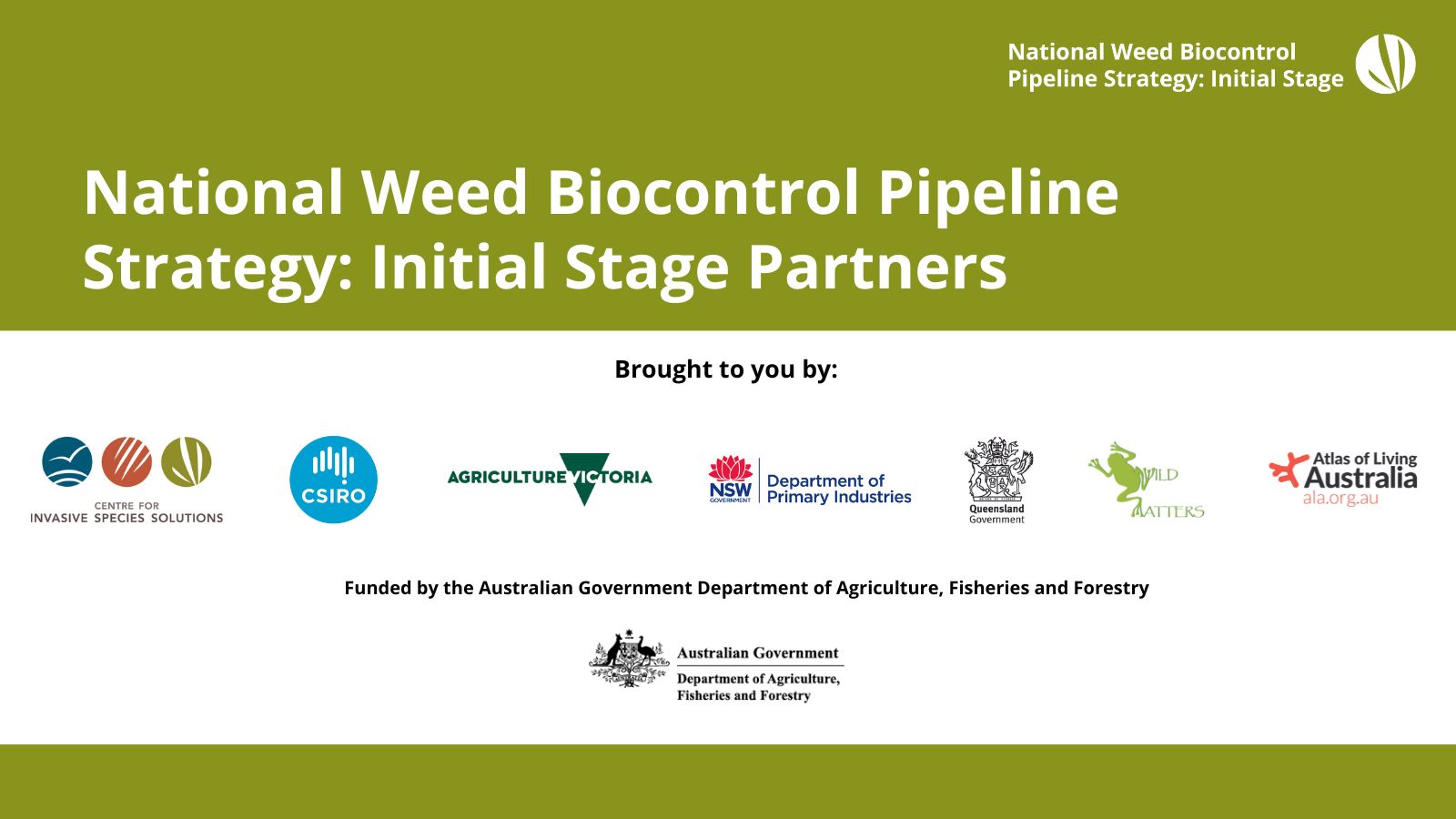How weeds will be assessed.
Weeds for consideration will be sourced from:
- State and Territory lists of high threat weeds
- Weeds identified in Healthy Country Plans as having impacts on First Nations people and their culture*
- An open nomination process.
Weeds from all sources will be assessed for weed threat and biocontrol prospects.
* Weeds impacting First Nations people’s culture will be identified through a review of Healthy Country Plans and targeted engagement with First Nations organisations.
Who will assess weed threat?
An independent panel of Weed Risk Assessment experts will undertake assessments, based on available information and evidence. Advice from technical experts may also be sought. Where scoring confidence is low or data deficiencies exist, further scrutiny will be applied to ensure a robust assessment result is obtained. Note that the assessment panel will not know who has nominated the weed.
Who will assess biocontrol prospects?
The biocontrol prospects (feasibility x likelihood of success) will be assessed for the eligible weeds by weed biocontrol research practitioners. Biocontrol prospects will then be combined with the weed threat status to derive a subset of most promising and high value weed candidates for potential future biocontrol RD&E investment.















